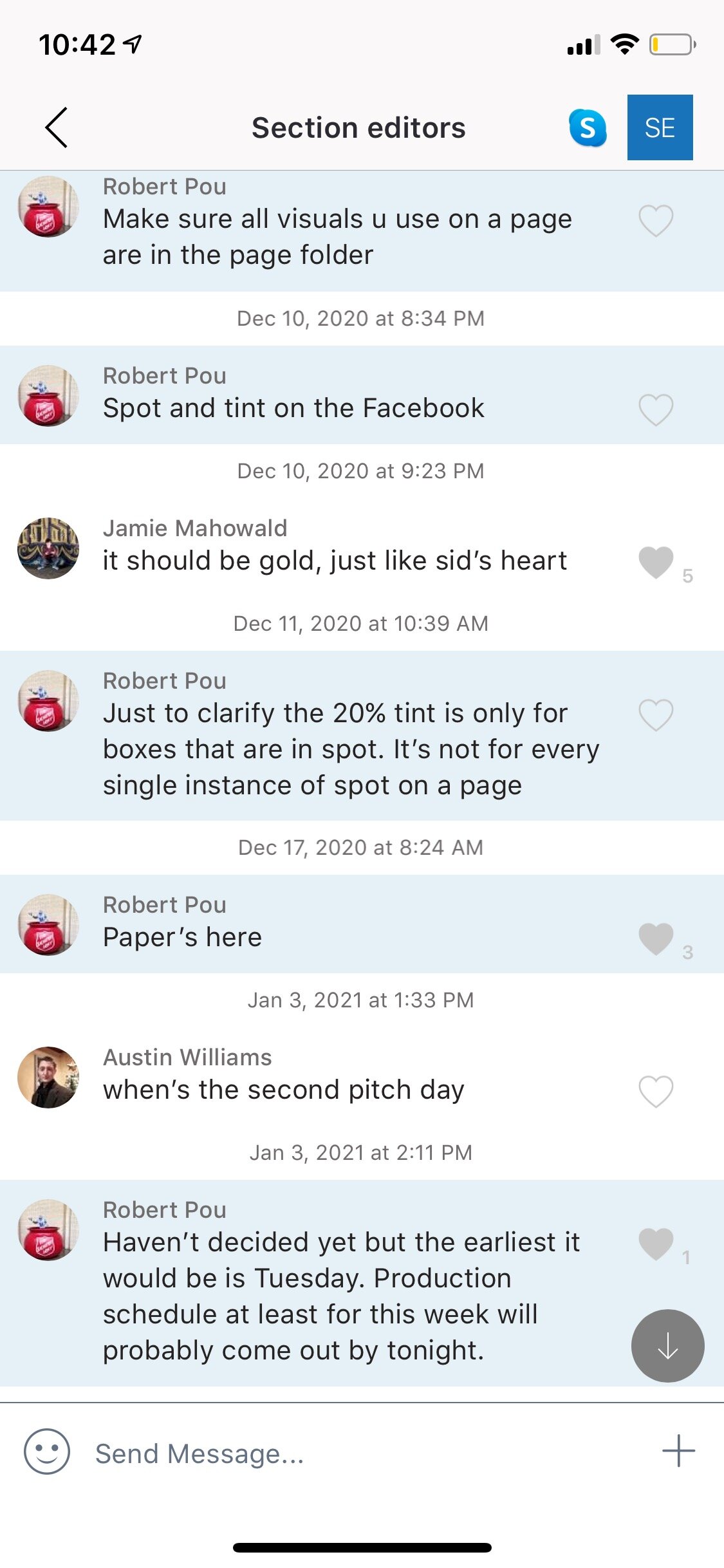
Leadership and Teambuilding
Leadership and Teambuilding
“Make it happen” is what I tell members of my staff whenever they come to me with a problem. I help them, of course, but at a certain point they need to find a way to accomplish their goal, meet their deadline. A source not responding to email? Find another way to make contact. A photographer forgot to take photos at the football game? Find other visuals. You already cut your story down and there’s not enough room for it on the page? Find a way to fit it in.
I’ve found that sometimes my staff members come to me for assistance at the first sign of trouble, and my goal has been to develop them into self-sufficient, independent journalists who are in the business of problem-solving. Yes, they’re writers, they’re designers, they’re interviewers, but they’re also problem-solvers. And the best way for me to lead is by example, so every day I challenge myself to solve my problems creatively in order to inspire those around me.
My role
Below you can see the responsibilities I must fulfill as Editor-in-Chief and my original application to the position.
Communication
With more than 50 staff members and three different class periods, communication is vital to our success. In addition to texting and calling partners on individual stories, we use Facebook for larger, more formal announcements that everyone needs to hear. For instance, the spot color, notes from pitch day, and photo request forms can be found on Facebook.
The new addition to our communication I made this year is Groupme group chats. On one level we have three class group chats comprised of the people who meet together each day. In these, I or my managing editors remind staff members of small assignments or events coming up in the next couple days.
Then, the section editors group chat is how I convey information to the leaders of each section that isn’t necessarily geared toward staff writers. Most of the time, this communication revolves around story slotting and page designing.
Finally, the editorial board group chat is comprised of the twelve seniors who serve on the editorial board and write for the opinions section of The ReMarker. Our conversations usually revolve around our reactions to important events on campus and around the country. We also meet once a cycle to plan our editorials, columns and other opinion pieces.
Making tough decisions
When I became editor almost a year ago, the outgoing editor told me the toughest part of the job is actually the very first thing that needs to get done – forming my staff and letting some people know they didn’t get their first-choice position. He was right. Not everyone got what they wanted, and I had to think about the effectiveness of the staff going forward rather than just handing my good friends their preferred positions. It wasn’t easy, but I learned how to deliver bad news and keep my team motivated and engaged.
Halfway through the year, I encountered an even tougher challenge – I had to demote a section editor and, thus, deliver terrible news. We needed a change for a multitude of reasons that I won’t get into, but the experience allowed me to understand how to “fire” someone.
My spiel and now my formula for this type of interaction moving forward looked something like this: “As you know we’ve had several conversations about your performance. We’ve attempted to solve the problem of _____, but because we haven’t seen the improvement necessary, I’m going to have to ask you to step down as ______. I know this isn’t the news you wanted to hear, but I would encourage you to stay engaged with the newspaper the rest of the year because you have a lot to offer, like ____, ____ and ____. This decision is final.” I found out that it’s best when the conversation is brief and firm. There shouldn’t be any room for negotiation, assuming there have been previous conversations of course. I was also prepared to offer reasons for the decision when asked. Even though I was extremely prepared, I hated to make the decision, and I was extremely uncomfortable, but I learned a valuable lesson about showing compassion when someone receives bad news.
Going virtual
After school went online in March because of COVID-19, I was named Editor-in-Chief and had to find a way to produce the May newspaper remotely. Not only was everyone in a new position, but everyone was at home. We missed the collaboration and more efficient communication that comes with working together in person. To navigate this difficult situation, I transferred all the headshots, ads, visuals, stories, pages, etc. to a Google Drive that everyone could access no matter where they were. We came up with new ways of tracking our progress, meeting over Zoom, working together from afar to produce the seventh edition of the 66th volume of The ReMarker. We also produced the September magazine, September newspaper and December newspaper online because of sporadic outbreaks of COVID-19 and the resulting closures of St. Mark’s. In addition, our “work Saturdays” – the final day to finalize page design and edit pages each cycle – where usually 25 people attend was cut down to an attendance of eight. These inconveniences have certainly complicated our job, but we have adapted and still found a way to provide our community with quality content.





